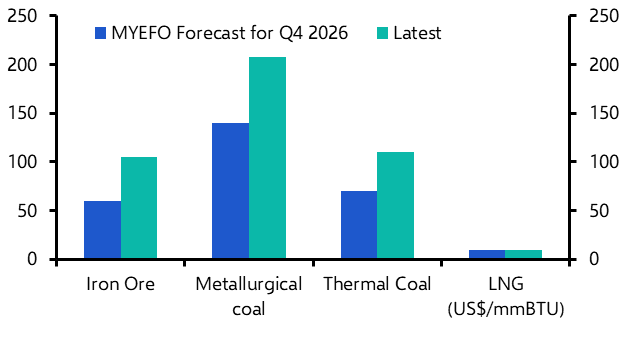There’s no shortage of issues to keep investors awake at night, but some concerns have more cause than others. The threat posed by the Delta variant shook markets at the start of last week for good reason – disruptions triggered by a major surge in cases is a key downside risk to our generally sanguine view about the global recovery. On the other hand, worries that China’s economic slowdown could derail recoveries elsewhere seem less justifiable.
Assessing the threat posed by a Chinese slowdown starts with the data. But any analysis of China’s economy is complicated by doubts over the reliability of the official numbers. In response, we have developed our own proprietary indicator – the China Activity Proxy (CAP) – to track shifts in the economy.
As we explained in our latest China Economic Outlook, the CAP shows that China’s economy grew at a decent pace in the first six months of 2021. However, we’ve argued for some time that this year is likely to be one of two halves, with solid growth in the first half giving way to softer growth in the second. As estimated using the CAP, we forecast the economy to expand by only 3.0% in 2022, down from 10.0% in 2021.
The threat to global growth of a Chinese slowdown makes for good headlines, but context is important here.
Weaker growth in China will arithmetically pull down global GDP growth – every 1%-pt drop in China’s growth rate knocks around 0.15%-pts off global growth. Accordingly, the slowdown in China we are forecasting will on its own shave more than 1%-pt off full-year global GDP growth in 2022. But beyond this the implications for individual economies are likely to be less significant than is often claimed.
The Chinese economy has been running above trend since late last year, thanks to a stimulus-propelled rebound from lockdown and surging exports. A period of weaker growth was inevitable at some point. The slowdown we anticipate over the coming quarters should therefore be viewed as a return to normality.
What’s more, although China is clearly a hugely important part of the world economy, its influence on the global cycle is often overstated. The relationship between growth in China and growth in the rest of the world is not particularly strong. (See Chart 1.)
Chart 1: GDP (% y/y) (Q1 2012-Q4 2019)*

Sources: Refinitiv, Capital Economics; *China is CAP measure
Indeed, while Chinese producers have played a central role in meeting the surge in demand for consumer durables during lockdowns, China has not been a source of significant demand for other economies through the pandemic. On the contrary, its current account surplus has increased substantially as a share of global GDP over the past year as exports have boomed. (See Chart 2.)
Chart 2: China Current Account Surplus (% Global GDP)

Sources: Refinitiv, IMF, Capital Economics
China’s rebound from the depths of the pandemic in early 2020 was impressive but failed to lift other economies. Likewise, the slowdown we anticipate over the coming quarters is unlikely to pose a big threat to recoveries in other major economies, including the US and euro-zone.
So what are the implications of China’s slowdown for the rest of the world? Three stand out.
First, the withdrawal of stimulus and slower infrastructure and property investment will cause China’s demand for industrial metals to soften. This is likely to weigh on the prices of these commodities and also pose a headwind to GDP growth in major producers in Latin America and Africa.
Second, it’s likely that concerns about the outlook for China will cause periodic bouts of market turbulence – both because investors perceive China to be an important source of global demand, but also because major corporations such as Apple and Tesla make a large share of revenues there.
Finally, while China’s slowdown may not derail recoveries in the world’s major advanced economies, it is a reminder that it is now set on a structurally weaker growth path. We estimate that China’s sustainable growth rate has slowed from around 10% in the 2000s to just 4% now. A combination of weaker productivity and a shrinking workforce means that it is likely to slow further, to perhaps 3% or so, in the years ahead.
This will have significant consequences for what the world economy looks like in 10-20 years’ time. Crucially, in contrast to the view of most analysts, we think this means that China is unlikely to supplant the US as the world’s largest economy when measured at market exchange rates.
Although markets have historic form when it comes to panicking about the global growth implications of a Chinese slowdown, that concern is largely misplaced. There will be macro and market spillovers as China slows – and the geopolitical implications of this structural slowdown will play out over the long term. But in the near term it is unlikely to derail recoveries in the world’s other major economies. As China’s economy returns to normality, understanding and keeping in mind the context will be crucial.
In case you missed it:
- Our Chief UK Economist, Paul Dales, argues that while the economic hit from the “pingdemic” won’t be huge it will be unhelpful.
- Having called the continued climb in risky assets this year correctly, our markets are tempering some of their optimism…
- …and have nudged down forecasts for “high beta” currencies.



